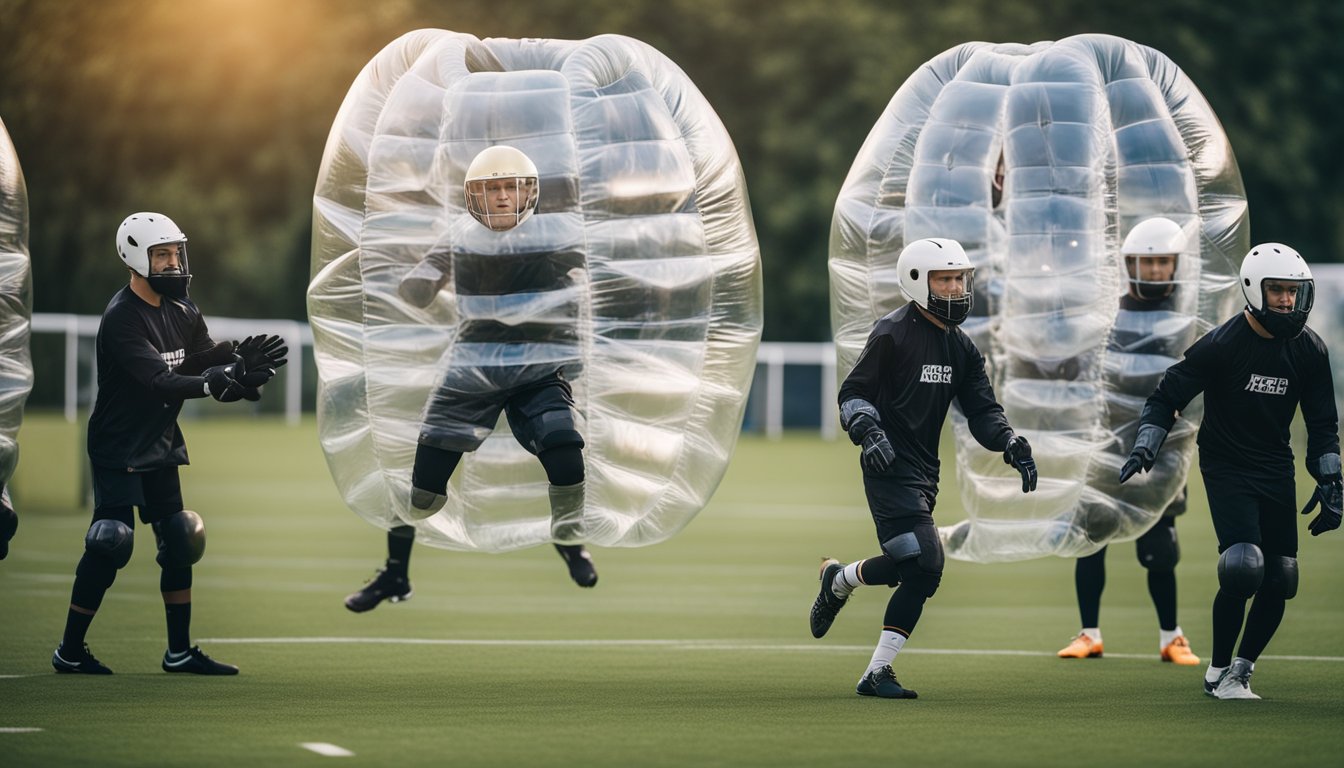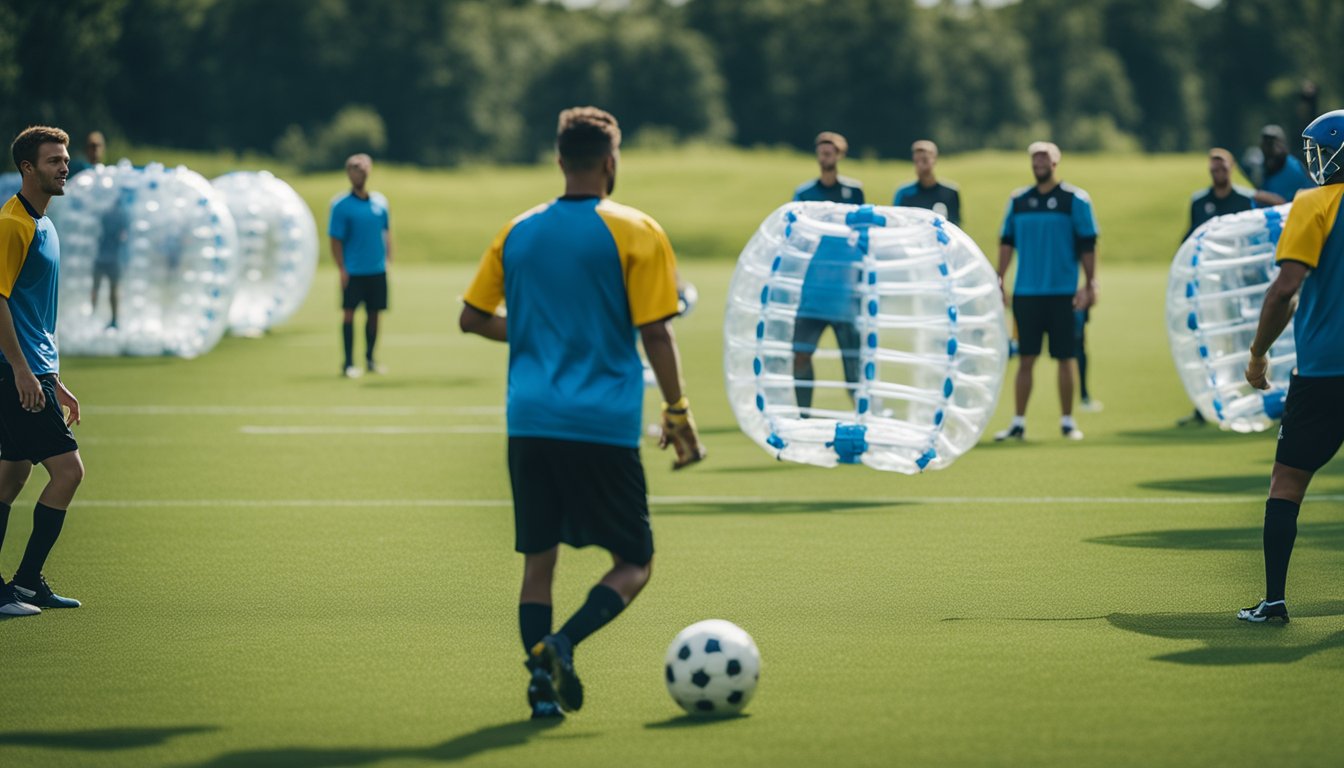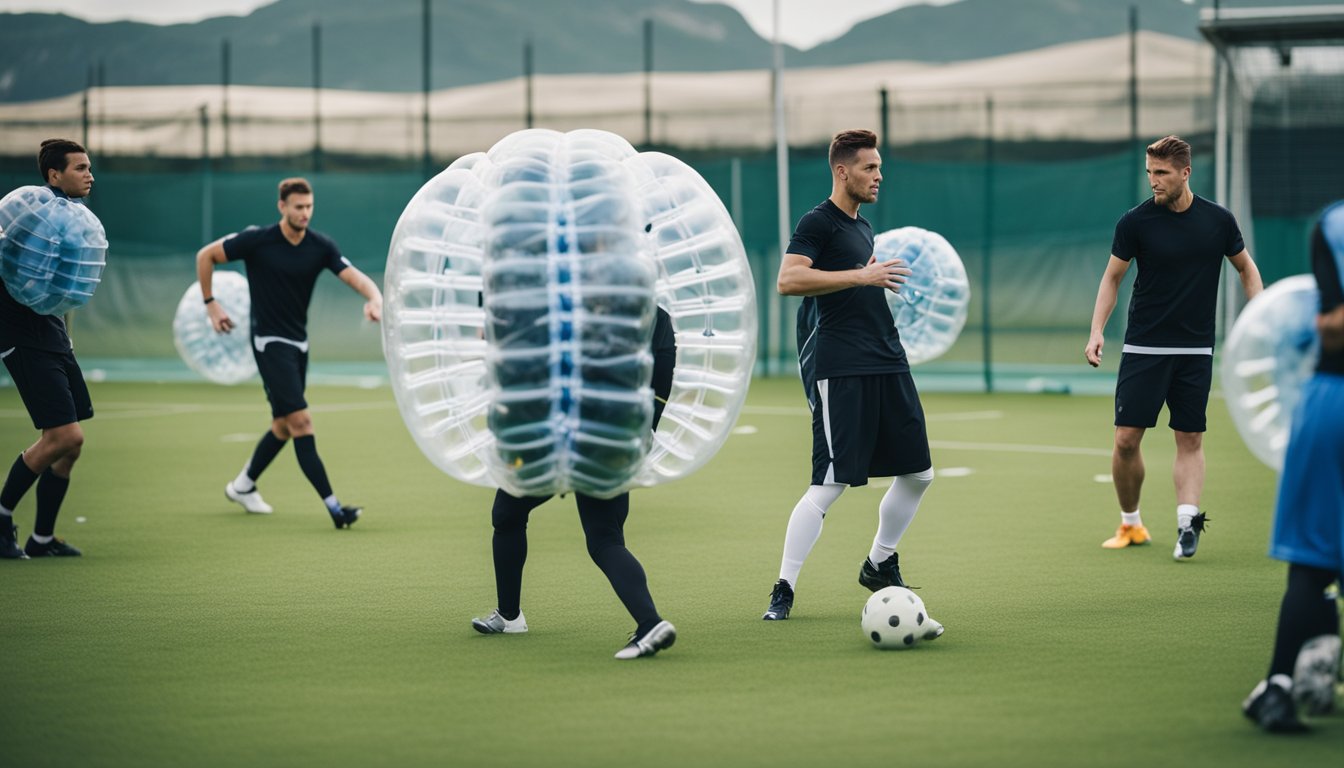Late updated: 17 Apr 2025 11:04
Written by: Emma Saunders
Bubble Football Injury Prevention Best Practices: Essential Tips for Safe Play
Bubble football has taken the world by storm, combining the excitement of traditional football with the added thrill and unique challenges of bouncing around in inflatable bubbles. As engaging as it is, this sport comes with its share of injury risks. To play safely and reduce injury risk, it's crucial for participants to ensure that their bubble provides adequate head coverage and perform proper warm-up exercises.

Ensuring that the bubble fits properly and covers the head by at least eight inches can make a significant difference in preventing potential injuries. Furthermore, understanding that women experience certain injuries more frequently in bubble football is essential for creating tailored prevention strategies. It becomes imperative that we focus on implementing effective injury prevention methods, such as adjusting bubble straps and establishing dynamic warm-up routines, to enhance the safety of all players.
By combining careful equipment checks and structured pre-game preparations, we create a safer environment that allows everyone to enjoy the exuberance of bubble football. As we explore best practices for injury prevention, players and coordinators alike can benefit from heightened awareness and proactive measures. Our goal is to enrich the bubble football experience while prioritising the well-being of participants.
Key Takeaways
- The bubble must cover the head by at least eight inches for safety.
- Effective injury prevention includes warm-ups and proper equipment fitting.
- Awareness of injury differences helps tailor prevention strategies.
Key Injury Prevention Strategies for Bubble Football
Ensuring safety in bubble football involves multiple strategies such as ensuring proper fitment of bubble suits, mitigating risks associated with head impacts, and integrating athletic trainers into the teams. Each of these components plays a vital role in keeping players safe while enjoying this energetic sport.
Proper Bubble Suit Fit and Biomechanics
Getting the right fit for a bubble suit is crucial. A suit that's too loose can lead to instability, while a suit that's too tight can restrict movement and breathing. Proper fit ensures that the bubble adequately absorbs impacts rather than the player’s body.
Biomechanics also play a role. Proper movement techniques reduce strain and improve performance. It's essential to teach players how to move efficiently within their bubbles to prevent unnecessary strain or injury.
Addressing Head Impacts and Concussion Risks
Bubble football can lead to collisions, making head impacts a concern. Using headgear that adds an extra layer of protection can reduce concussion risks. Teaching players preventative techniques, such as tucking the chin during impact and maintaining awareness of surroundings, is also crucial.
Despite the protective bubble, educating players on recognising concussion symptoms like dizziness or disorientation is important. Early recognition allows for immediate medical attention and reduces long-term risks.
The Role of Athletic Trainers in Safety
Athletic trainers are integral to enhancing player safety. They provide valuable expertise in injury prevention and management. Trainers should be on-site to offer immediate care if injuries occur and guide injury prevention practices before matches.
Implementing warm-up exercises monitored by trainers can reduce the risk of strains and sprains. They can also assess whether players are fit to participate or require rest. Having trainers present serves as both a preventative and responsive measure, ensuring a safer environment for everyone involved.
Implementing and Monitoring Best Practices

Implementing best practices for injury prevention in bubble football involves using data strategically, raising awareness about CTE, adapting measures based on regional needs, and recognising local policies. Monitoring these practices ensures they remain effective across different settings.
Using Data to Enhance Prevention Measures
Data plays a crucial role in injury prevention. By continuously collecting and analysing information on player activity, we can customise training regimens to minimise risks. This involves using athlete monitoring systems that track workload, recovery, and performance metrics.
Benefits of Data Usage
- Real-time adjustments
- Improved decision-making
- Enhanced player safety
Implementing these technologies allows us to tailor prevention strategies, ensuring they align with each player's unique requirements.
CTE Awareness and Education Programmes
Chronic traumatic encephalopathy (CTE) is a significant concern in contact sports. Our programmes focus on educating athletes, coaches, and health professionals about CTE risks and symptoms.
Key Education Points
- Early detection methods
- Long-term impact of repetitive head trauma
- Importance of protective gear
*Through consistent education, we aim to minimise CTE risks, promoting long-term health and safety for players.*
Adapting Services Across Different Countries
Injury prevention strategies must be adaptable to different countries. This requires understanding cultural and infrastructural differences affecting sports health services. By engaging with international experts, we tailor approaches to regional needs.
Considerations
- Local sporting regulations
- Available healthcare infrastructure
- Cultural attitudes towards injury prevention
*Customising our prevention measures can lead to more effective injury management on a global scale.*
Importance of Local Policies and Zip Code Considerations
Local policies and regulations significantly influence how injury prevention practices are implemented. These policies can vary widely even within different zip codes. Understanding these nuances ensures compliance and optimises strategy effectiveness.
Actionable Steps
- Assess local regulations
- Collaborate with local authorities
- Adjust practices based on policy variations
*By acknowledging local policies, we maximise the potential for successful injury prevention in community sports settings.*
Frequently Asked Questions

Bubble football is a unique and enjoyable sport, but safety is crucial to ensure a good experience. Key considerations include reducing injury risks, using safety equipment properly, warming up, following safety protocols, correctly using the bubble suit, and knowing how to handle injuries.
How can one minimise the risk of injury when playing bubble football?
To reduce injury risks, contact during the game should always be incidental and not intentional. Players must adhere to rules and respect each other’s space. It's also essential to have game supervisors who enforce these guidelines effectively.
What safety equipment is essential for bubble football participants?
Participants should wear knee pads and elbow pads to protect against impacts. A well-fitted bubble suit is critical as it acts as a primary buffer against falls and collisions. Ensuring the suit is in good condition before each game is also vital.
Are there recommended warm-up exercises to prevent injuries in bubble football?
Yes, a good warm-up routine is important. It should include dynamic exercises such as leg swings, bodyweight squats, and arm circles. Stretching key muscle groups will further prepare players for the physical demands of bubble football.
What are the safety protocols to follow during a bubble football game?
Players should abide by set age and weight restrictions for safety reasons. Game coordinators must enforce the wearing of safety gear. Keeping the playing area free from hazards and conducting brief checks after each session are recommended.
How should one correctly use the bubble suit to reduce accident occurrences?
One should always secure the harness properly and ensure the bubble is fully inflated before the game. This ensures maximum protection. Regular maintenance of the bubble suit, including checking for punctures or faults, minimises accident risks.
What actions should be taken if an injury occurs during a bubble football match?
In the event of an injury, it is essential to stop the game immediately. Assess the injured player and decide if professional medical help is needed. Applying first aid on-site can help with minor injuries, and recording the incident can aid in future prevention.
